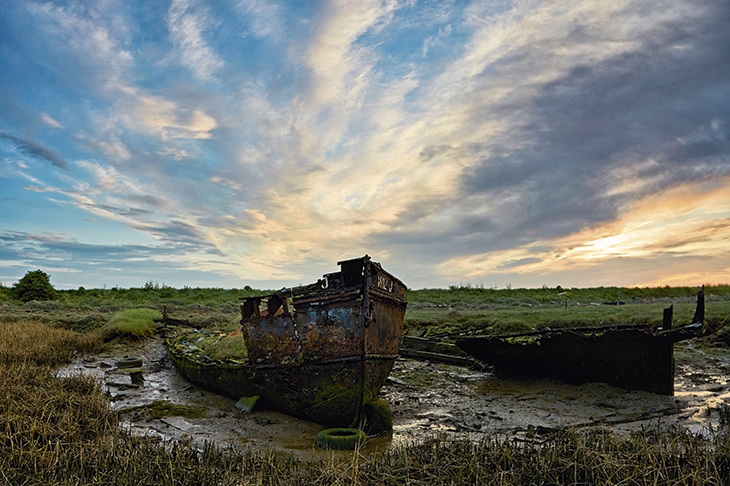We ought to cherish the haunted landscape of the Thames Estuary while we can. The grey hulks of old power stations, the white domes of oil refineries, the sternly rectilinear factories, all of which once seemed oppressive, are now instead poetic because of their near extinction. Caroline Crampton’s atmospheric and movingly written exploration of the Thames, and that once-industrial estuary, is especially illuminating on the soul of the river; and she investigates satisfyingly what it is in these silent marshes and concrete embanked paths that still generates such an odd sense of unease.
Her relation to the river and the sea beyond is especially strong: her parents built their own sailing boat and, years ago, voyaged all the way from South Africa to London, first finding a berth in the yuppified St Katharine’s Dock by the Tower of London, but then some months later settling on the Isle of Sheppey in Kent; a region of wheeling marsh birds that is only 30 miles from the centre of the City and yet on misty winter days can feel as remote as St Kilda.
The patterns of Crampton’s life are coloured by the estuary: the flow of childhood weekends sailing out into the sea, the aching periodic desire to return to these stern horizons of dark inlets and tiny shingly villages. Crampton begins, though, with another origin: the elusive source of the Thames at Cricklade in Gloucestershire. From here, walking a dry pebbly path that in rainier conditions fills and trickles and gushes, she begins to glide downriver through national and personal history; from the serious intensities of her own time at Oxford; on to the dappled Thames of The Wind in the Willows and Jerome K.








Comments
Join the debate for just £1 a month
Be part of the conversation with other Spectator readers by getting your first three months for £3.
UNLOCK ACCESS Just £1 a monthAlready a subscriber? Log in